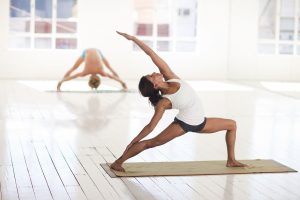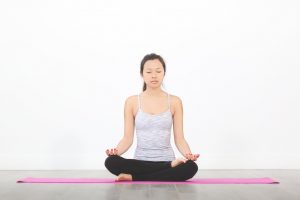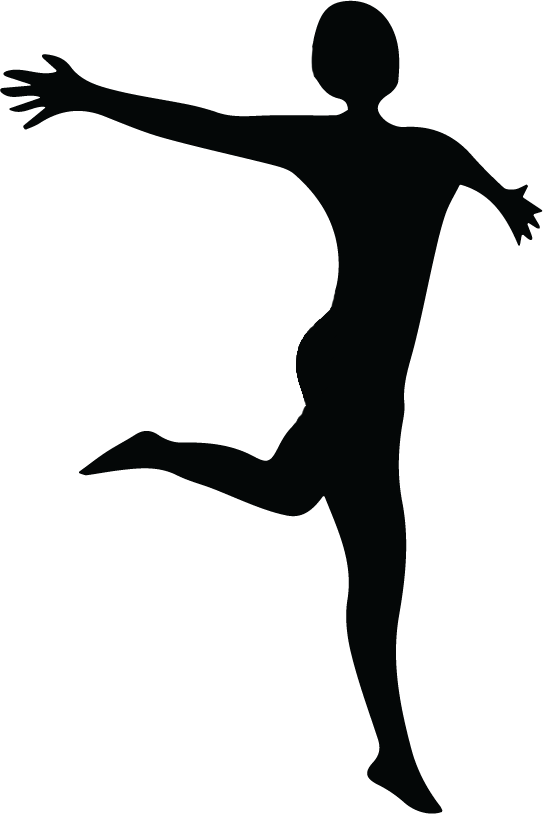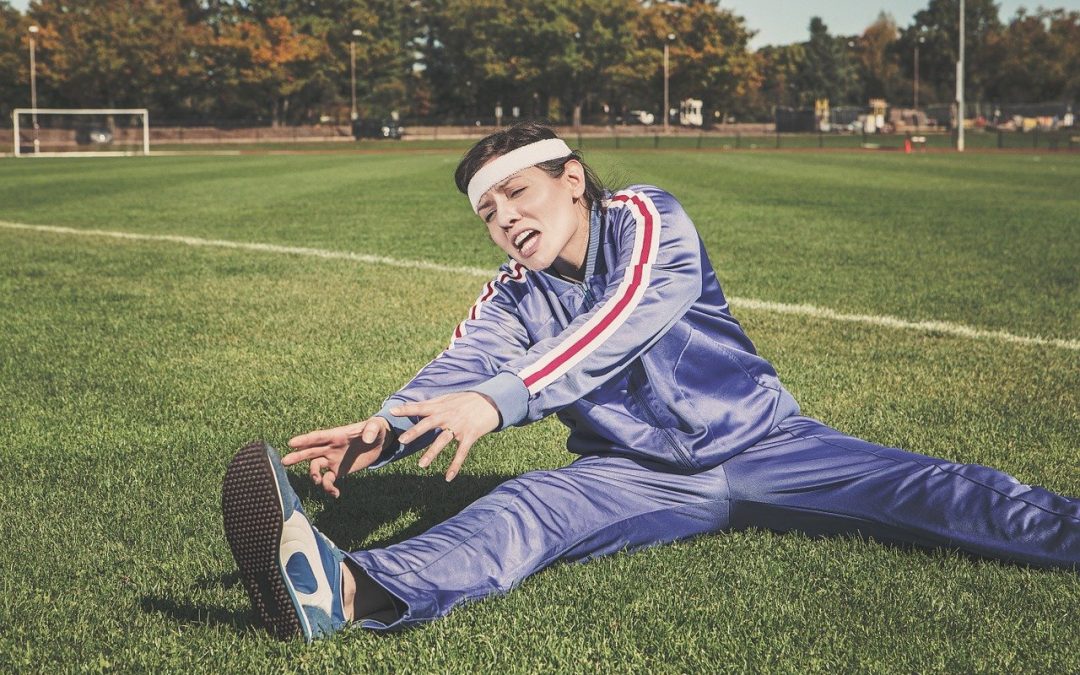"My muscles feel so stiff!"
When was the last time you had this thought? Was it this morning when you walked down the hall for breakfast? Was it during the first 10 minutes of your run? Was it just now as you sat down (or got up) to read this article?
I wrote the first version of this article yesterday, and I was scathing about stretching (for the reasons that will become clear). I posted it on the website and started to write part two. But last night I couldn’t sleep, so first thing this morning I took the post down and decided to rewrite it.
Now, my views on stretching haven’t changed and the research tells a very clear story. But my view of the real problem has changed. During last night’s restlessness, I had plenty of time to reflect on my post, the evidence and what other people are talking and writing about stretching. As I mulled this over I couldn’t sleep because something was bugging me. Something just didn’t feel right in the way I was trying to put my message across.
And then I had the Eureka moment. That moment of “aha!” (no, not the Norwegian synth-pop band from the ‘80s).
The real problem with stretching is that when we are talking about stretching, we aren’t always talking about the same thing. And this leads to so much confusion that leaves us not knowing whether stretching is good or bad; when we should stretch and when we shouldn’t stretch; should we even bother stretching at all?
So, I want to use this article to clear all of that up once and for all. And I’m going to start by making a clear and bold statement:
Stretching is neither good nor bad,
it’s just another tool we can use
If you’ve read any of my other articles, you’ll notice that I define a lot of what you do in the same way… We need to move away from things being good or bad, because it all comes down to whether something is useful and appropriate for you at that time. It really is as simple as that!
OK, let’s continue our journey into stretching.
As runners we are told that we must stretch. After all, you need to be flexible to avoid injury – and who likes being stiff and achy?
So, when was the last time you stretched? Be honest here…
If you stretched recently, what were you trying to achieve by stretching?
If you didn’t actually stretch, but only thought that you should stretch, ask yourself why you thought you should stretch?
What is it that we think stretching is doing?
It would seem that most of us stretch because we think that stretching is going to achieve one or more of the following:
- Greater range of motion and flexibility
- Less stiffness
- Reduced injury risk
- Improved performance

Cue the explosion!
What you’re about to learn now is going to blow your mind!
No, not really – but it will make you stop and think.
Stretching the way you, I and most people think of stretching is unlikely to achieve any of these things!
Yep, you read that right – all those millions of words written all over the Internet about how stretching can reduce injury and give you the range of movement you believe you need for running are at best, stretching the truth.
So, time to clarify what I’ve just said. If you’ve ever read, listened to or watched anyone saying that stretching is a waste of time, they are referring to what we traditionally think of as stretching: those static stretches where you hold a pose for 5 seconds or longer.
It can get a little more complex, as static stretching by modern definitions is really holding stretches for considerably longer than a minute, but actually it’s a little irrelevant as any held stretch is a static stretch in the context of this article.
To be perfectly clear, I am not referring to any type of dynamic stretching – only the static stretches. Static stretching does practically nothing for us as runners, according to the current available research. Controversial I know, but that is what the overwhelming majority of the research tells us.
And if high performing elite athletes like the Australian Ballet and most elite football (soccer) teams and track athletes have all removed static stretching from their training, perhaps it’s time that recreational athletes like you and me take notice.
Is there no reason to stretch?
Having said that, there is one reason to stretch that I didn’t cover in the initial list above, and that’s the feeling that stretching gives us. Stretching can often feel awesome, and from a nervous system perspective I think this is fantastic – as long as you recognise this is why you are stretching and you aren’t expecting anything else from it.
In fact, you also need to pay attention to when you want that lovely feeling from stretching, because if you stretch before a run or any other performance activity, you run a very high risk of reducing your performance.
And this is one of the reasons why the Australian Ballet caution about stretching just for the feeling. They liken it to the feeling we get from eating sugar: just because it feels good doesn’t mean that we should do it.
Why doesn't static stretching work?
So, why doesn’t static stretching do anything for us as runners? Well, we need to look at what you want to achieve. Static stretching was once thought to add length to your muscles so that you could increase your flexibility. By flexibility, we are primarily talking about range of movement.
Research clearly shows that static stretching, unless performed under a very specific set of conditions, simply cannot add length to your muscles.
The specific set of conditions that may give longer-term results, requires you to be fully committed to wanting longer muscles! You see, stretching by itself is inefficient and when you know the lengths you need to go to in order to physically add length to a muscle, I know you’ll say “forget that!”
How about holding each stretch position for between 5 and 7 minutes, several times per day for at least 10 weeks? That’s what the research tells us we need to do to create new growth to lengthen a muscle – and even then it’s not guaranteed. Hmm, not for me thanks.
So that brings up a really important question:
Why do you think you need longer muscles for greater flexibility?
Of course, you might not think that, but there are a lot of people who do and some of those people are instructors, coaches and gurus that are sharing this information with runners who trust in what they are saying. And I don’t believe for a minute that they are sharing this misinformation to do harm, I just think it’s an area where there needs to be more education – particularly at the recreational athlete and coaching level.
Now, the question about needing longer muscles for flexibility also brings up a deeper question:
“Do I need greater flexibility to be a better runner?”
And it’s a great question that has a very unsatisfying answer:
It Depends…
How much flexibility do you need?
Do we need to be able to touch our toes? Probably not. In fact, it appears that Eliud Kipchoge can’t touch his toes and he’s currently the fastest marathon runner in history.
Now, I use the forward bend as a benchmark in the neurological stuff I do so perhaps I should clarify why I use that. The forward bend can be a great demonstration of an improvement in overall range of movement, and to that end it’s useful in what I teach. But it’s only one of many different tests you could use. Perhaps being able to lift a bent leg higher is more important for you – then that’s what you use as the test.
Do you need sufficient hip extension, ankle range of motion, shoulder range of motion and neck mobility? Yes you do, and the most important word there is sufficient.
Because you don’t want to be like Mr Tickle or Twizzle (from the Adventures of Twizzle)!
10 foot limbs
Actually, those two characters perfectly illustrate the argument against stretching creating a permanent change in muscle length. With all the stretching that yogis, gymnasts and other specialist athletes do, if there were permanent, enduring changes in muscle length, they would be walking around with 10 foot long arms and legs – and they’re not
So what is the sufficient range of motion that’s needed for running? The truth is, there isn’t an exact degree of range of movement that’s required, and in my own view I believe you already have what you need but you aren’t using it. I cover this a little later on, but it’s really for the part two article as I want to stick with stretching in this one.
So we have established that static stretching doesn’t add length to your muscles except under specific and dedicated circumstances, and from a flexibility perspective it’s pretty useless and probably unnecessary. Now, it could be argued that holding a position for a period of longer than 5 seconds to several minutes is helping your nervous system adapt to using your available range of motion, and to some extent I’d go with that.
But there are much more effective (and comfortable) ways to achieve this that will take seconds rather than the many hours of stretching over an extended period of several weeks or months.
And there is one final clincher for me in the argument against static stretching, and it’s got to do with how your body functions. Quite simply, when you lengthen a muscle – whether that’s temporary lengthening as in any form of stretching – or a more permanent lengthening (as per our specific stretching conditions), the body will actually return back to baseline. So even if static stretching did do anything in terms of adding length, that length disappears as soon as you stop your stretching programme. Now if that’s not a waste of time then I don’t know what is.

Losing the stretch
And yes, you could liken it to strength gains and endurance gains which will reduce if you take a break from training, but you would have to take a very long break for it to return to baseline. With stretching, you can return to baseline within two weeks of stopping your extended stretching routine.
Brad Walker (AKA The Stretch Coach), guru of all things stretching, even says this himself in a podcast interview with Mike Maddox who runs Smashing Fifty. You can listen to the podcast here.
It’s an interesting listen, but make sure you listen between the lines as it were. It would be easy to trash some of what Brad says after reading this article, but actually in the second half of the podcast Brad brings out some very interesting points on stretching.
Brad is also very careful to point out that you need to look at why you want to stretch – just the same as I’ve been saying here: you need to know what you want to achieve as not all forms of stretching are appropriate for all situaitons or even all sports.
In his books, Brad also talks about extended warm ups that include static stretching, but us normal everyday recreation runners are highly unlikely to do 30 minute warm ups – and there’s that confusion again: crossing back and forth.
And this is where my aha moment really kicked in. My real message here isn’t really to say static stretching is rubbish and a waste of time (which for running it pretty much is), it’s to say:
This is completely the wrong approach for what we want to achieve

Stretching for mindfulness
Before I briefly explain there is perhaps one other reason why you might want to do some static stretching, and that’s for meditation. There is a form of Yoga called Yin Yoga, and although they do mention fascia and flexibility, their real focus is using the long stretch holds for mindfulness. Personally, I would rather do the mindfulness meditation without the stretching element, but everyone is different.
As a quick aside, if you wanted to know more about Yoga and stretching (the real truth), Jules Mitchell is an excellent resource. She’s a scientist by training as well as a highly skilled Yoga teacher, and has written extensively about why stretching isn’t doing what we all thought it was.
OK, I want to wrap it up shortly as the main objective of this article was to clear up the confusion around stretching. Have I achieved that? No, not yet. But, I hope that I have clearly put across the argument against static stretching. And yes, you can go out there and find people (and the odd bit of research) that will extol it’s benefits, but modern science very clearly demonstrates that it doesn’t do what we thought it did, and in a running context static stretching doesn’t help us at all.
In fact, static stretching has been linked to a reduction in performance if performed before or during a run (or any exercise). This is especially important if you have limited time for a warm up.
So the message about static stretching is that for running it isn’t worth doing as there are better ways to achieve what we need, and it could reduce your performance.
Aha - it's your brain!
I mentioned earlier that my aha moment was that all the discussions around stretching are largely irrelevant because we are approaching the objectives for running all wrong.
I also mentioned that I believe you probably already have the range of movement you need, but it’s likely that you aren’t using it. And that’s because it’s not all about extending your range of motion to gain flexibility. How about how easily you can move into a required pose? What does the quality of the movements you have feel like, irrespective of your range of movement?
How well you move, and how controlled you are as you move through your existing range of motion is far more important than aiming to extend it. This is closely linked to the same principle that I mentioned about your body returning muscles to their baseline length. Essentially, you are your brain – your brain and nervous system control everything.

And your brain likes equilibrium. It likes things to be efficient and balanced. As part of it’s survival process it likes to conserve energy, so if it can get away without recruiting muscle fibres and other tissue then it will. So if you spend all day in a restricted range of movement by sitting down and not moving in a wider range of motion, that restricted range becomes your normal operating range. Your brain and nervous system recalibrates to only use that range because that’s all that’s needed.
Until you go for a run where you need a wider range of movement and you suddenly expect your brain to allow that to happen – but your brain says:
“um, no. You don’t usually move like this and I’m not entirely sure it’s safe so I’m just going to keep you restricted”.
So you have the physical range of movement there, but because of your normal habits and your brain’s response to that – recalibration of your operating range – you can’t access it.
You can learn much more about this in my Run Strong Guide which you can find here.
The great thing is that once you change your way of thinking and change your approach, you can open up this range of movement and access more of it whenever you like – without the guilt of not doing those stretches that actually wouldn’t have been doing anything anyway, even if you had been doing them!
Phew, that’s enough for one post. There will be more clarity in part two, but for now my best advice is to keep moving and do some dynamic mobility exercises and drills such as those in my free 14 Day Challenge.
If you found this article helpful, please share with as many people as you like – I would be very grateful.




Recent Comments